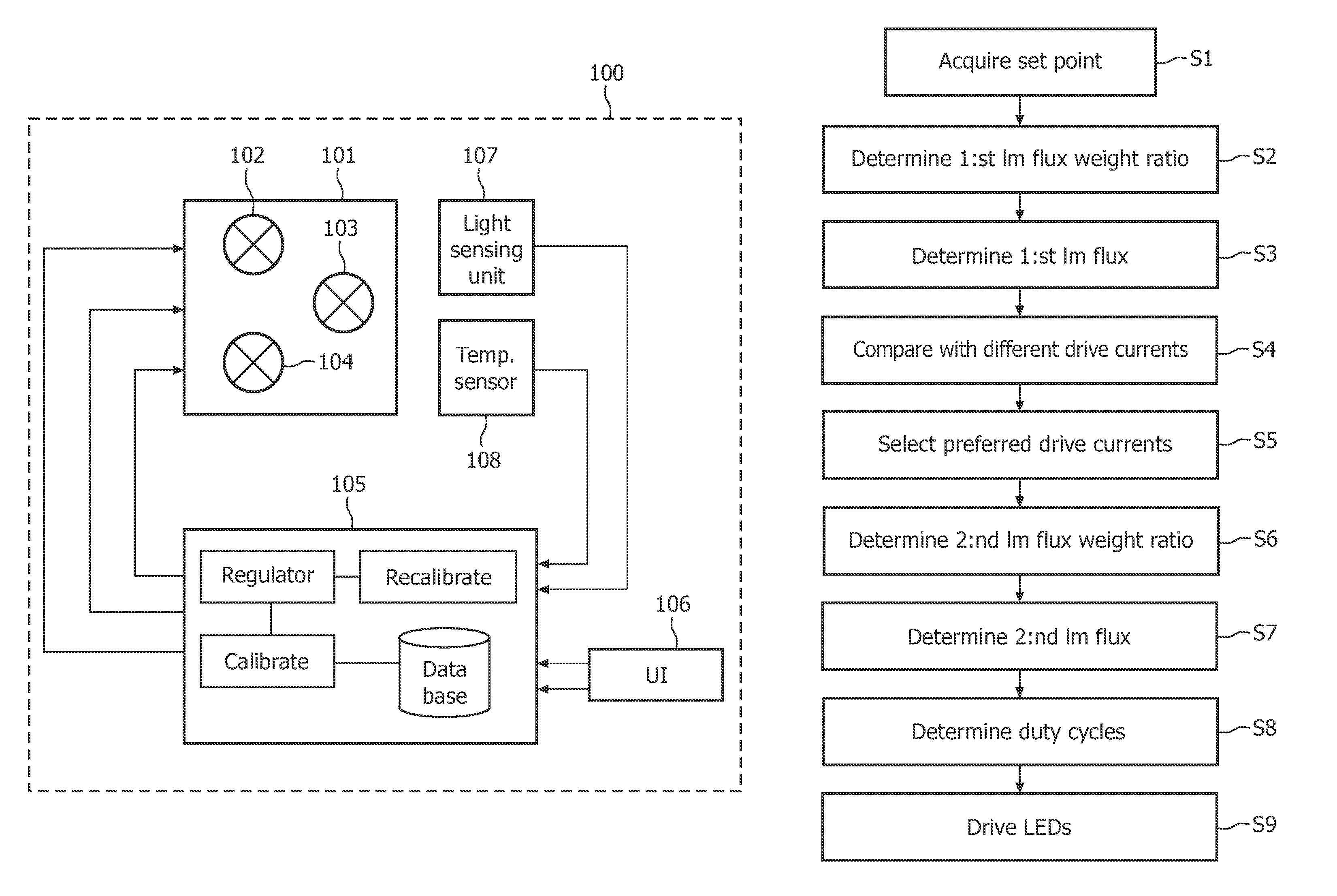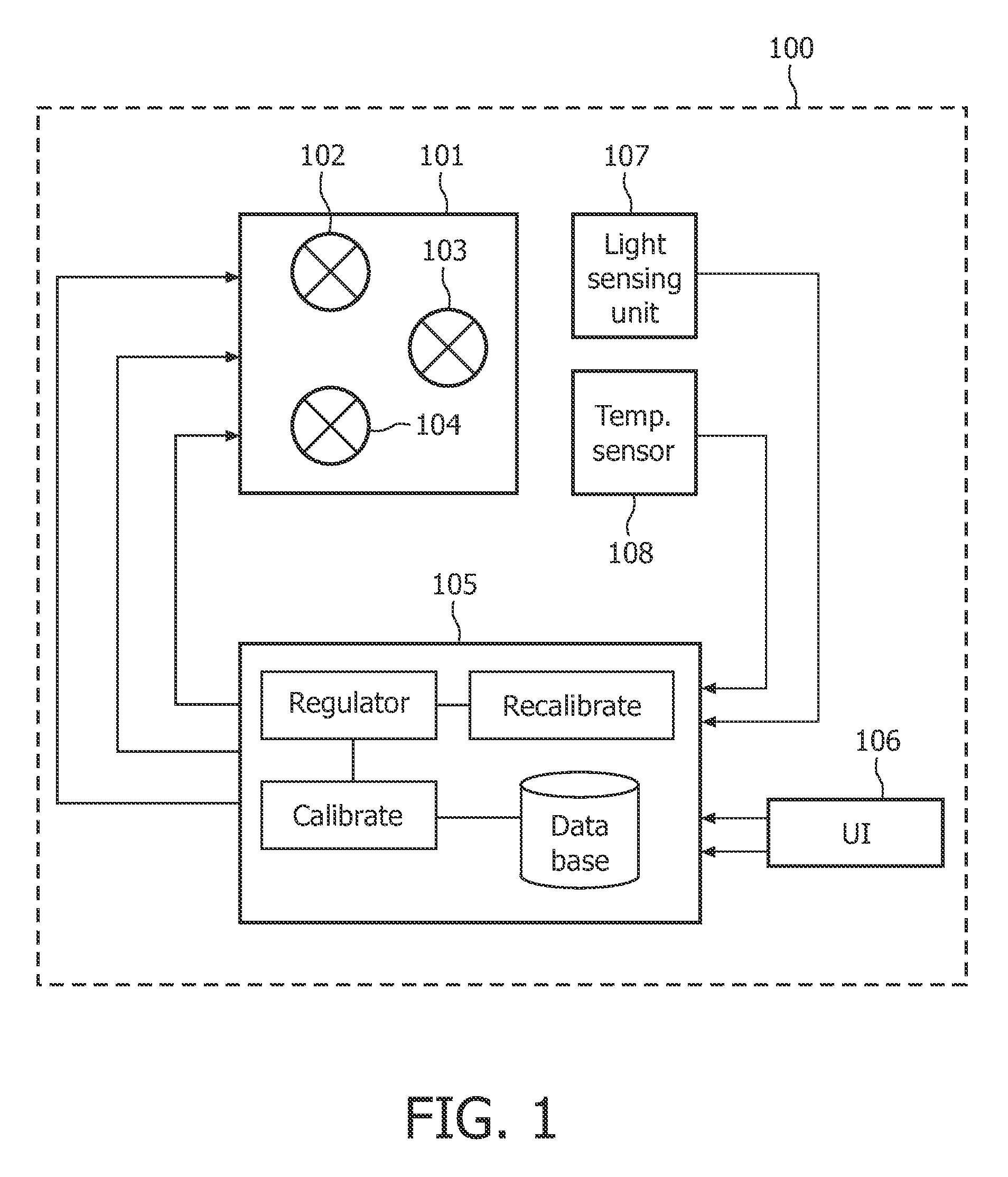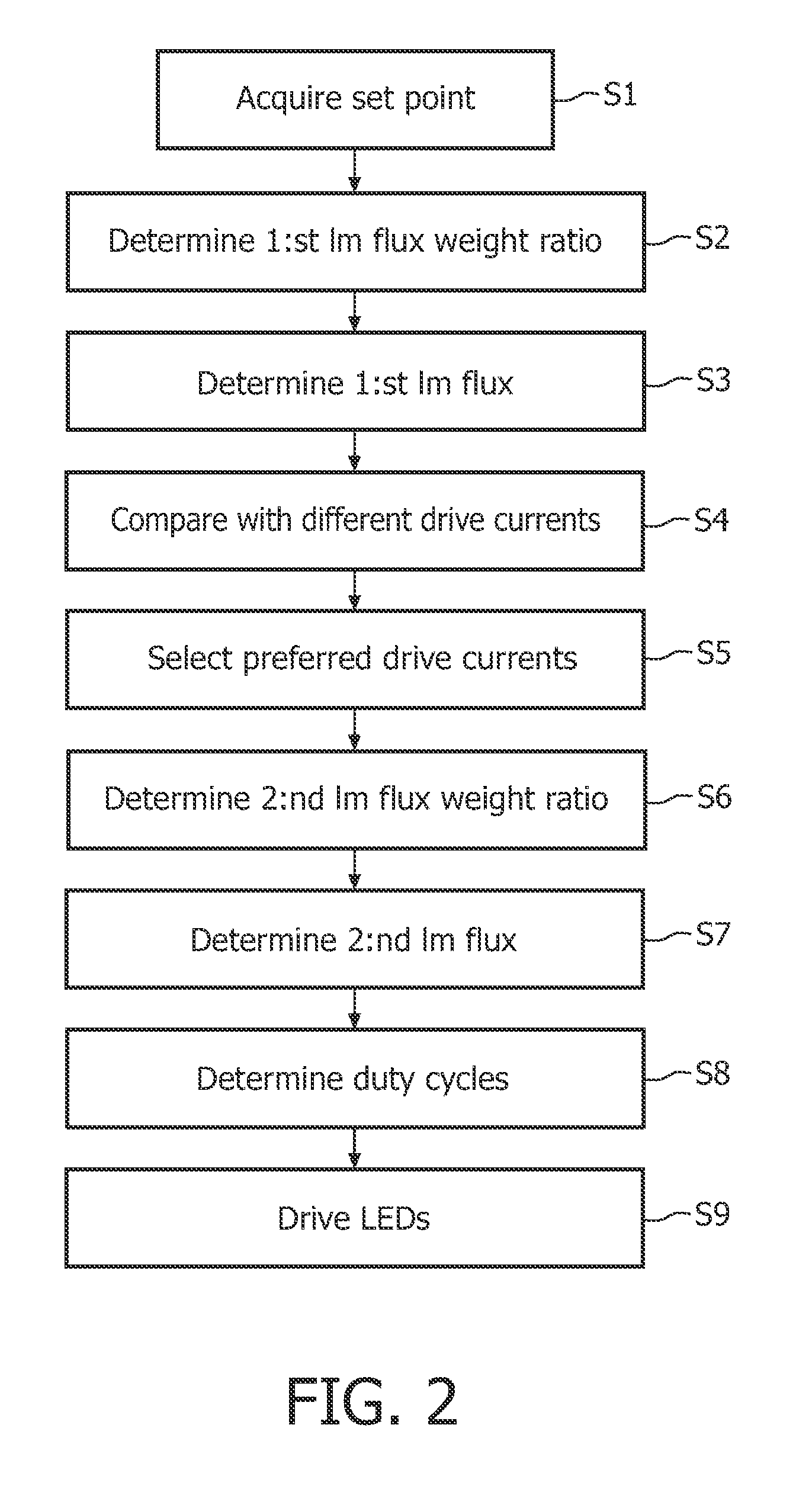Method and driver for determining drive values for driving a lighting device
a technology for lighting devices and drive values, applied in the direction of electric variable regulation, process and machine control, instruments, etc., can solve the problems of system not being suitable for driving lighting devices, waste of power to generate light, etc., and achieve the effect of overcoming or at least alleviating the problem
- Summary
- Abstract
- Description
- Claims
- Application Information
AI Technical Summary
Benefits of technology
Problems solved by technology
Method used
Image
Examples
Embodiment Construction
[0030]The present invention will now be described more fully hereinafter with reference to the accompanying drawings, in which currently preferred embodiments of the invention are shown. This invention may, however, be embodied in many different forms and should not be construed as limited to the embodiments set forth herein; rather, theses embodiment are provided for thoroughness and completeness, and fully convey the scope of the invention to the skilled addressee. Like numbers refer to like elements throughout.
[0031]Referring now to the drawings and to FIG. 1 in particular, there is depicted a block diagram of an adjustable color illumination system 100, arranged in accordance with a currently preferred embodiment of the present invention. In the exemplary embodiment, the illumination system 100 comprises a lighting device 101 comprising of three differently colored light emitting diodes of the colors red 102, green 103 and blue 104. The lighting device 101 is in turn connected t...
PUM
 Login to View More
Login to View More Abstract
Description
Claims
Application Information
 Login to View More
Login to View More - R&D
- Intellectual Property
- Life Sciences
- Materials
- Tech Scout
- Unparalleled Data Quality
- Higher Quality Content
- 60% Fewer Hallucinations
Browse by: Latest US Patents, China's latest patents, Technical Efficacy Thesaurus, Application Domain, Technology Topic, Popular Technical Reports.
© 2025 PatSnap. All rights reserved.Legal|Privacy policy|Modern Slavery Act Transparency Statement|Sitemap|About US| Contact US: help@patsnap.com



